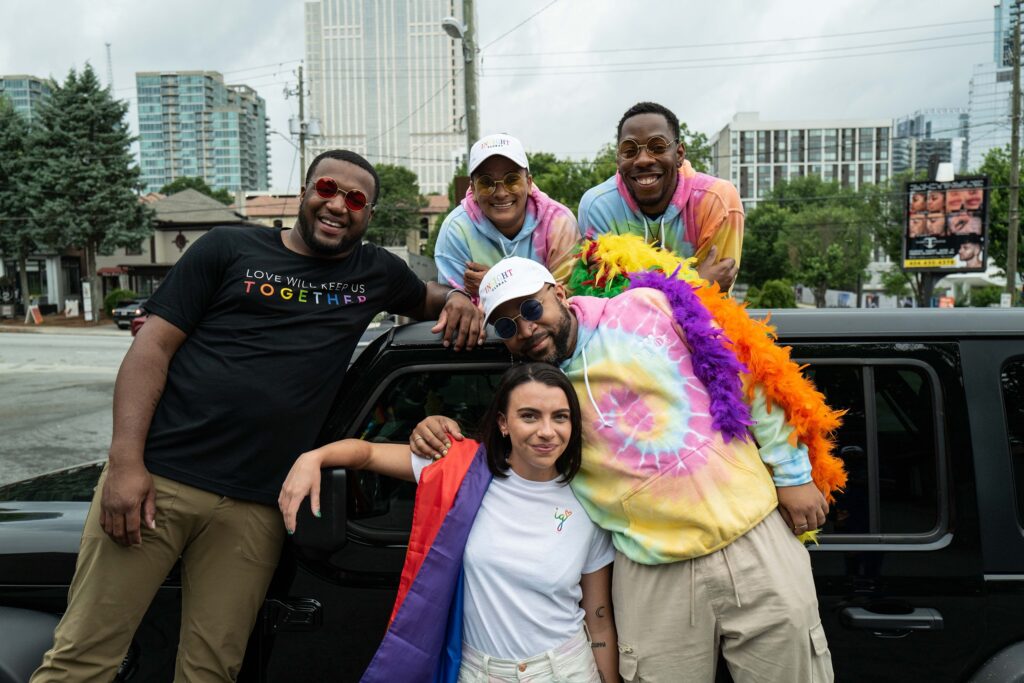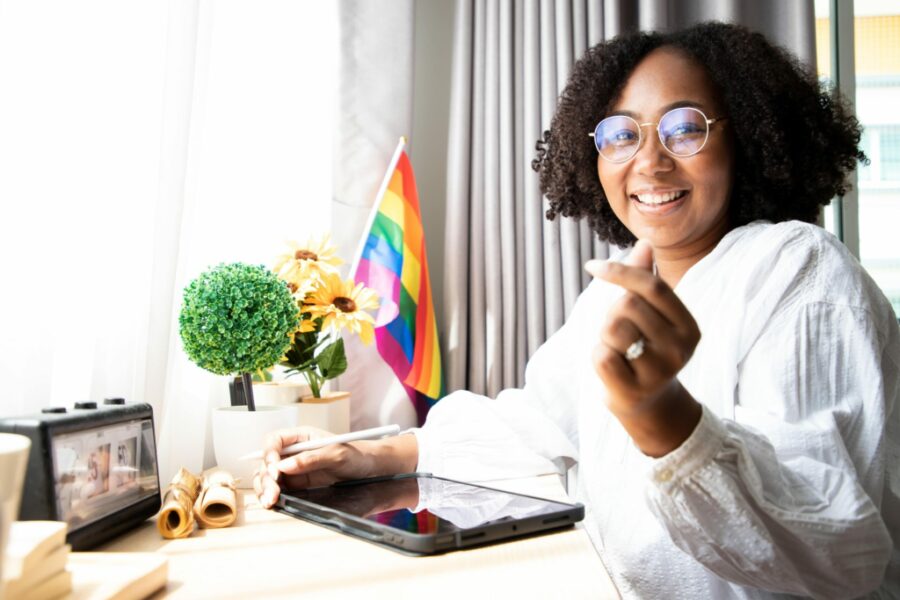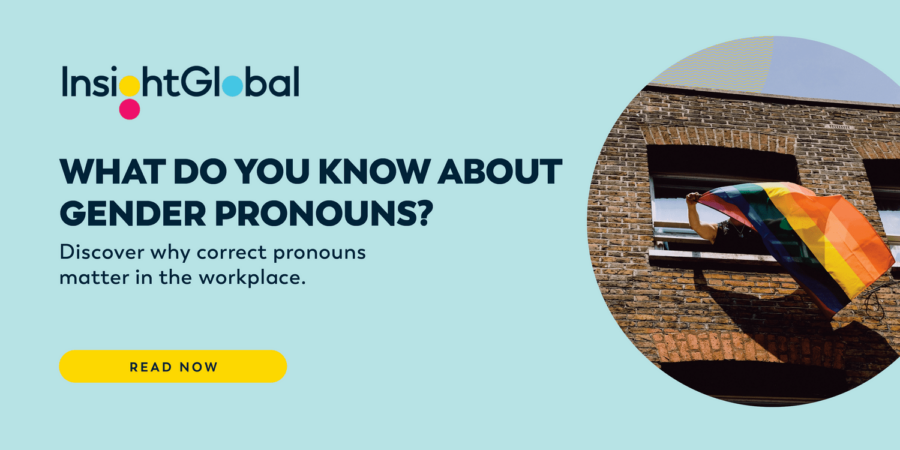LGBTQIA+ is an evolving acronym that covers those who identify as lesbian, gay, bisexual, transgender, queer or questioning, intersex, asexual, and other identities outside of those centered around heteronormativity.
Currently, in the United States, over 7% of people identify as part of this community, with one in five Gen-Z adults identifying as such. This is almost a 2% increase since 2020. And it’s likely that these numbers are underestimated since many people in the LGBTQIA+ community may not feel safe enough to come out due to stigmatization and ongoing religious and/or political persecution.
While some religious and political establishments remain committed to anti-LGBTQIA+ agendas, many corporations have realized the importance of appealing to their LGBTQIA+ customers. The purchasing power of the LGBTQIA+ community, also known as the “pink dollar,” is over $3.7 trillion globally. In the United States, in 2022 alone, LGBTQIA+ spending was valued at over $1.4 trillion dollars, according to The Pride Co-op.
To capitalize on this, many companies have started celebrating Pride Month—or at least engaging in the appearance of celebrating it, utilizing its familiar rainbow colors as marketing tools.
What You Should Know About Pride Month
Pride Month is celebrated each June. It’s been celebrated for over 50 years, but in 2000, then-President Bill Clinton made an official declaration that June is Gay and Lesbian Pride Month. In 2011, President Barack Obama expanded the official observance to include Lesbian, Gay, Bisexual, and Transgender people.
Pride Month commemorates the 1969 Stonewall Uprising. The Stonewall Uprising marked a turning point for the Gay Liberation Movement in the United States. The Stonewall Inn, located in New York City’s Greenwich Village, was a gay club and safe haven for many in the community during the 1960s. At this time, being gay was a crime in every state except Illinois.
On June 28, 1969, New York City police conducted a raid that led to riots between police and bar patrons, along with neighborhood residents. It culminated in six days of protest that included violent attacks on protestors. The following year on June 28, thousands of people marched from the Stonewall Inn to Central Park. This march, known as the “Christopher Street Liberation Day March,” is now recognized as the nation’s first gay pride parade. Since then, the LGBTQIA+ community has continued to organize, march, protest, and demonstrate for equal rights.
Why Companies Need to Support LGBTQIA+ Pride After June Ends
Although our society has grown more inclusive and accepting, the truth is that we as a society still have a long way to go, especially when it comes to equal rights for people in the LGBTQIA+ community. (Data from the FBI indicates that hate crimes against the LGBTQIA+ community continue to rise from decades past; the United Kingdom noted an increase as well.)
Today, while same-sex marriage is legal and employers are generally prohibited from discriminating on the basis of sexual orientation and/or gender identity, members of the LGBTQIA+ community still face discrimination and harassment in other areas. Depending on the jurisdiction, they can encounter obstacles in education, housing, or even medical care because of their identity.
At work, three in 20 LGBTQIA+ women and six in 20 LGBTQIA+ men feel their sexual orientation could harm their professional prospects. It’s up to companies to create a safe, inclusive environment year-round for everyone—especially members of the LGBTQIA+ community, who often face discrimination in many areas of the personal and, occasionally, professional lives. This could mean making sure health care coverage is fully inclusive to all identities (and their partners) and making sure people of all identities have the same opportunities for growth and are paid what their non-LGBTQIA+ contemporaries are paid. (We’ll dig into more examples in a moment.)
The fight for equal rights and the need for community advocacy happens year-round—well after Pride months ends.

How Companies Can Avoid Pinkwashing or Rainbow-Washing
The term “pinkwashing” originated as a spin-off of the term “whitewashing” to describe how companies used the ubiquitous pink ribbon marketing for breast cancer awareness while selling products full of carcinogens. Today, pinkwashing has multiple meanings; one refers to the appropriation and co-opting of the LGBTQIA+ movement for corporate or political gains, such as to using Pride Month as a marketing tool.
The term “rainbow-washing” is also used to describe these types of performative efforts that exploit the LGBTQIA+ community for corporate gains. Every Pride Month, numerous corporations boast colorful rainbow marketing materials as a display of solidarity, even when their business practices do the bare minimum for – or worse yet, actively harm — the LGBTQIA+ community.
Efrain Baldiris Jr., an Account Manager with Insight Global, questions why many do this. “In corporate America, there has been an increase of companies that celebrate Pride Month, but what are they doing internally to empower the LGBTQIA+ community?”
Tyler Manfrin, a Talent Strategy & Branding Coordinator at Insight Global, says that rainbow-washing and pinkwashing actively harm the community and can call a company’s commitment into question.
“Most often, companies will change their logo solely for Pride Month, then change it back once June is over and never mention it again until the following year,” he said. “While showing your support by changing your logo during Pride Month can reflect your commitment to our community, what about the rest of the year?”
To avoid engaging in rainbow-washing or pinkwashing, here are some ways human resources departments, hiring managers, and executives can ensure they’re making a real and long-lasting impact on the LGBTQIA+ community after Pride Month ends. Hint: You need to do better than rainbow logos and DE&I pushes during the month of June.
Be An Ally All the Time
Members of the LGBTQIA+ community have had their identities politicized and face multiple forms of oppression. This is happening today, in 2022, even as many companies applaud themselves for being “diverse.”
It’s no secret that corporate lobbyists play an integral role in our current political landscape. You cannot be both an ally and a bystander. That means that corporations need to take an active approach to working towards equality for the LGBTQIA+ community.
Allyship is an evergreen thing; not a summer fling for the month of June.
Here are 10 ways to supports your LGBTQIA+ employees after Pride Month ends:
1. Prioritize Safety for LGBTQIA+ Individuals
Companies should advocate and protect its employees and customers, and they should back that up through real action and support. Through Pride Month and after it ends, companies need to make sure all people feel safe at work. This will help you reach true belonging in the workplace for this community.
2. Educate On the Origins of Pride Month
Many people who are outside of the LGBTQIA+ community don’t know the history of Pride Month and the Stonewall Uprising. It’s important to teach the origins of Pride Month so that people can understand its importance.
Pride Month is more than parades and rainbow packaging; it’s a liberation and human rights movement. It’s crucial to educate people about the discrimination the LGBTQIA+ community faces and how the community is still fighting for equal rights more than 50 years later. This education can happen well after Pride Month ends.
3. Review Your Own Internal Policies
Consumers—and employees—are becoming increasingly educated about the companies they support or work for. Before sharing your LGBTQIA+ externally, ensure that allyship is happening in-house first.
“Employers should provide a safe, uplifting environment for any and all employees, regardless of their background, ethnicity, sexual orientation, or other identifiers,” says Manfrin. “We’re all human, so let’s build each other up whenever and wherever we can.”
4. Have LGBTQIA+ Representation In Leadership
Leadership undoubtedly influences company culture. It should be representative of the communities companies serve. But often, it’s not. LGBTQIA+ people are woefully underrepresented in leadership positions in the American workforce.
Less than one percent of senior leadership positions at Fortune 500 companies are held by LGBTQIA+ people. Just 2.4% of elected officials in Congress—13 people in total— identify as LGBTQIA+. This exclusion of the LGBTQIA+ community from leadership in the workforce is known as a the “rainbow ceiling” or “rainbow glass ceiling.”
“Members of the LGBTQIA+ community just want to be treated the same and have the same opportunities as others. Employers that create opportunities for people from different backgrounds make people that are different feel seen,” says Baldiris.
5. Donate to Organizations That Support the LGBTQIA+ Community
Many organizations need financial support, as the LGBTQIA+ community is under-served and under-resourced. As a marginalized community, some LGBTQIA+ people have needs such as housing support, mental health support, and educational support. Donating to organization that help with these can advance our society to be an equal and equitable one.
Manfrin suggests that “companies can support the LGBTQIA+ community by volunteering with organizations like The Trevor Project that provides life-saving support to LGBTQIA+ youth.”
“There are an immense amount of organizations out there that you can partner with, so do your end of the work and conduct research.”
6. Understand the Importance of Intersectional Identities
The ever-evolving acronym for the community—LGBTQIA+—illustrates just how diverse and expansive the community is. Someone who has an intersectional identity, such as being Muslim and transgender, or Black and lesbian, will have experiences that are very different from each other due to belonging to multiple marginalized communities.
For example, someone who is Muslim and transgender may face additional hardships due to exclusion from their religious and/or cultural communities in addition to transphobia and anti-Muslim sentiment outside of their communities. A Black woman who is a lesbian may be faced with more barriers such as racism and the gender wage gap in addition to homophobia. It’s important to not stereotype or typecast the LGBTQIA+ experience as monolithic.
7. Amplify LGBTQIA+ Voices In the Workplace
In order for organizations to understand the experiences of their employees and the various communities they belong to, they need to be heard. Manfrin suggests creating groups specifically dedicated to LGBTQIA+ team members and allies.
“In groups like this, people are able to connect with one another and share experiences everyone can relate to, ultimately building a sense of strong community in a marginalized group,” Manfrin explains.
These groups, often called employee resource groups (or ERGs), allow members of the LGBTQIA+ community to speak openly about their experiences inside and outside of work, and leadership should listen to suggestions made by these groups.
This can help amplify LGBTQIA+ voices, empowering them to advocate for themselves, which members of this community are more than capable of doing on their own. Marginalized does not mean infantilized. It’s critical to allow members of the community to lead. Allyship doesn’t mean talking over or for members of the community. Allies prioritize the needs and wants of the community; one of those needs or wants may be amplification.
“Prioritize inclusion over diversity,” Baldiris suggests. Baldiris notes that some companies only highlight their LGBTQIA+ team members during a Pride campaign. That is a form of tokenization.
“They focus on representing all their LGBTQIA+ team members, but only for a month. Inclusion means including this pride in the diversity of your team year-round. It’s representing your employees no matter their identities—and giving them the voice and power to influence and enact policies,” Baldiris emphasizes.

8. Provide Continuing DE&I Training and Compensate Your Team
In order to cultivate company cultures grounded in safety, equality, and equity, Baldiris highlights the importance of “continuous learning, company-wide, from leadership to new hires. The more you know about the experiences of others, the better you can empower them to make change.”
This means committing to ongoing DE&I training. More importantly, this training should be developed with input from people from marginalized communities who are compensated for their time. Investing in DE&I training is an investment in your workforce, and an investment in the safety, well-being, and satisfaction of your employees.
9. Take a Consistent Position on LGBTQIA+ Pride
Consistency comes from truly caring. Remember that intention doesn’t always equal impact. Be ready to take a consistent and committed position. That means being willing to understand that Pride is more than a marketing opportunity. Again, it’s a liberation and human rights movement.
Avoid co-opting the cause because it’s trendy or everyone else is doing it. You must be committed to continuing to do the work and stay consistent in your support of the LGBTQIA+ pride after Pride Month ends—and in the years to come.
10. Your People—and Your Company—All Benefit When You Prioritize DE&I Efforts
A core part of being a business means focusing on growth and evolution. Growth and evolution aren’t concepts limited to scalability and profitability. It also means being willing and able to do better when you know better. Diversity on its own isn’t enough. Inclusion matters, and it affects your organization’s bottom line.
Companies without diverse leadership teams typically underperform, while their counterparts that focus on DE&I do better and are often more profitable. Investing in DE&I efforts means long-term and year-round advocacy for the LGBTQIA+ community. A true commitment to DE&I can bring your organization improved workforce engagement, better consumer insights, and thought leadership — all of which can drive growth. More importantly, it helps create a society where all members are valued, included, and have equal rights.


 by Azmia Ricchuito
by Azmia Ricchuito 



 by Brita Long
by Brita Long 

